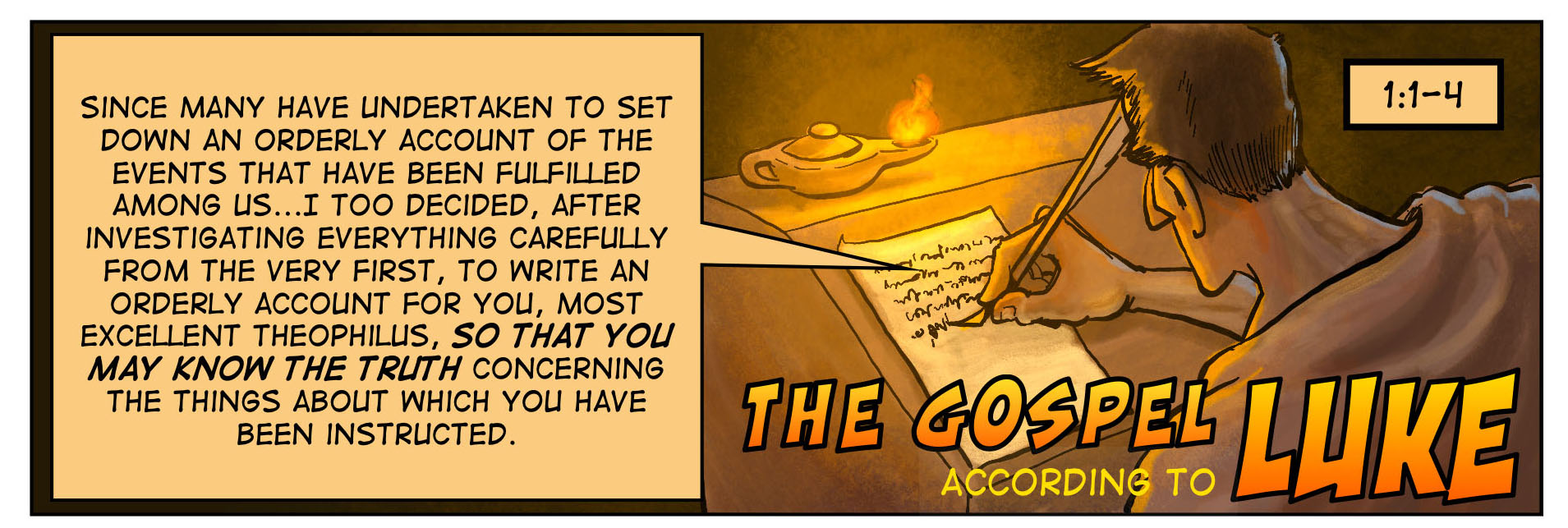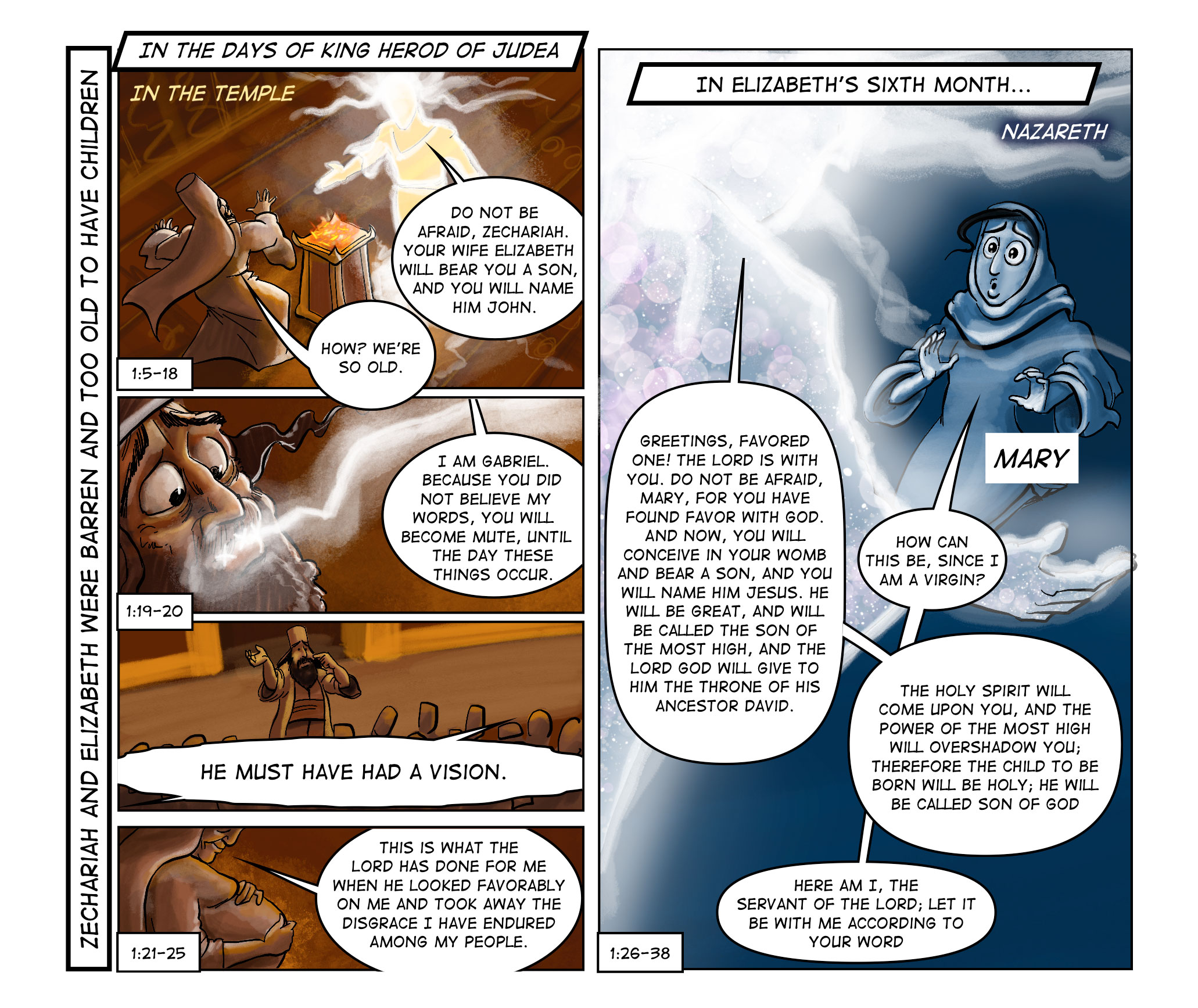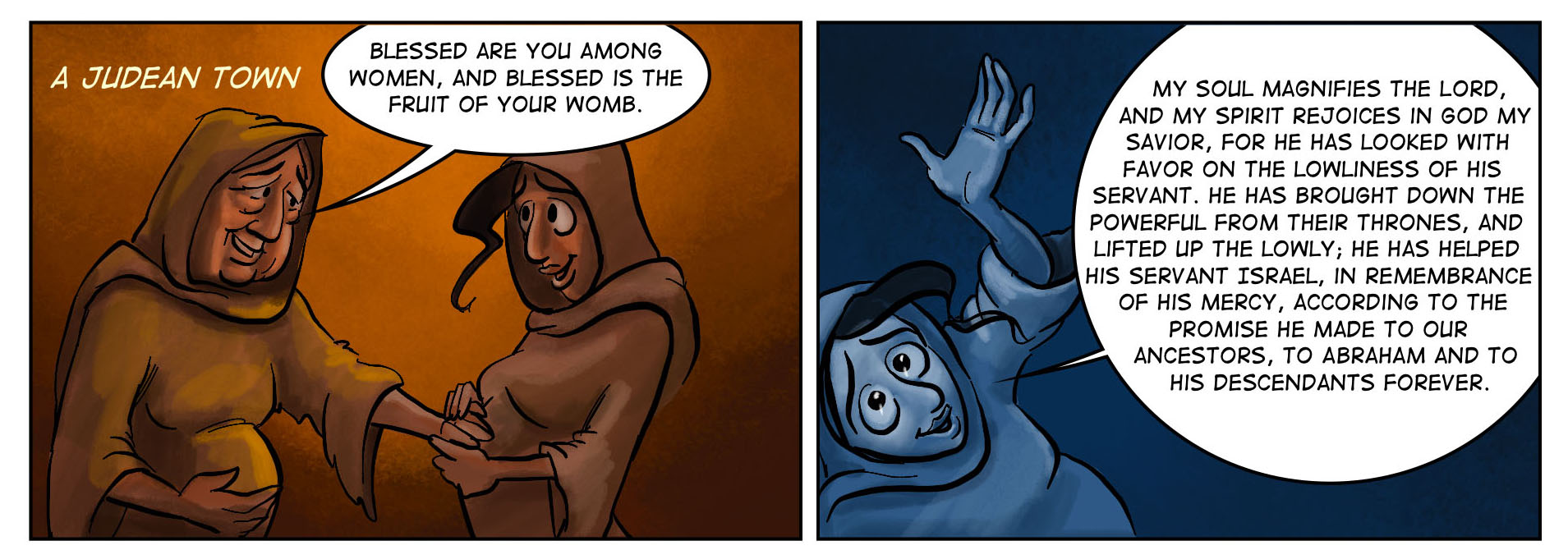Luke 1:1-56 | Birth Announcements
Page 1
Read Luke 1:1-56

Preview the PowerPoint
This embedded preview is housed at SlideShare. This lets you see the slides that you will download. Click the button below to download the PowerPoint file and a folder of .jpg images to use in other presentation software.
Commentary

Who is Luke?
We don’t know exactly who Luke was. Scholars have many theories. Two things seem to be clear from the text. First, Luke was not an eyewitness to the life of Jesus. He tells us that he investigated Jesus’ life by interviewing eyewitnesses.
Second, Luke was educated. This is evident by his excellent use of the Greek language. Some theories propose that Luke may have been a physician. One interesting theory proposes that Luke was the slave of a wealthy Greek man who paid to have Luke trained as a physician in order to serve the estate. This land owner took a liking to Paul and gave Luke to Paul when he became ill. Paul, in turn, set Luke free and welcomed him as a Christian brother. Whether this is true or not, we do know that Luke, according to the book of Acts, was dedicated to his friend and spiritual mentor Paul.
So, what gives Luke the right to write a gospel? While he may not have been an eyewitness, he was a competent historian who had access to interview those who lived the story. We may never know exactly who Luke was, but we are forever grateful for unique portrait of Jesus that he has contributed to the world.

Two Birth Announcements
In Luke 1:5-38 we see a contrast between two encounters with the angel Gabriel. First, Gabriel comes to Zechariah, a priest who is serving in the Temple in Jerusalem. Zechariah represents the religious establishment. He is faithfully fulfilling his religious duty, but when he encounters the divine messenger he lacks faith. However, Zechariah is also like the patriarch, Abraham, and is given a promise that his elderly wife, Elizabeth, will conceive and have a child.
The second encounter is between Gabriel and Mary, a common girl from the small Galilean town of Nazareth. She represents the lowest rung of Judean society. Yet, when she hears the promise of God, she humbly receives it. She also represents the power of God for creating something out of nothing. The Spirit of God brings life to Mary’s womb much like the Spirit hovered over the deep in Genesis 1.

Mary and Elizabeth
Two pregnant women meet and rejoice in the life that is growing in their wombs. Elizabeth’s child reminds us of the matriarch Sarah and her son Isaac, when God gave a child to a woman in her old age. Mary’s child reminds us that God can bring life out of nothing, through the Spirit, just like God did in the first verses of Genesis. Mary sings to God and reminds us that God’s love is for all people, bringing down the arrogant oppressors and uplifting the humbled and oppressed.
Mary’s Song (The Magnificat)
Mary is a young woman who is among the lowest people on the social scale in Israel. Yet, God has been physically implanted in her womb. She will bring the salvation of the world.
Her poem reads as a greatest hits album of the Hebrew Scripture that proclaims God’s faithfulness to God’s promises to Israel, even in the midst of Israel’s unfaithfulness. Mary’s poem is most like that of Hannah’s poem in 1 Samuel 2:1-10.
Luke 1:1 1:2 1:3 1:4 1:5 1:6 1:7 1:8 1:9 1:10 1:11 1:12 1:13 1:14 1:15 1:16 1:17 1:18 1:19 1:20 1:21 1:22 1:23 1:24 1:25 1:25 1:27 1:28 1:29 1:30 1:31 1:32 1:33 1:34 1:35 1:36 1:37 1:38 1:39 1:40 1:41 1:42 1:43 1:44 1:45 1:46 1:47 1:48 1:49 1:50


